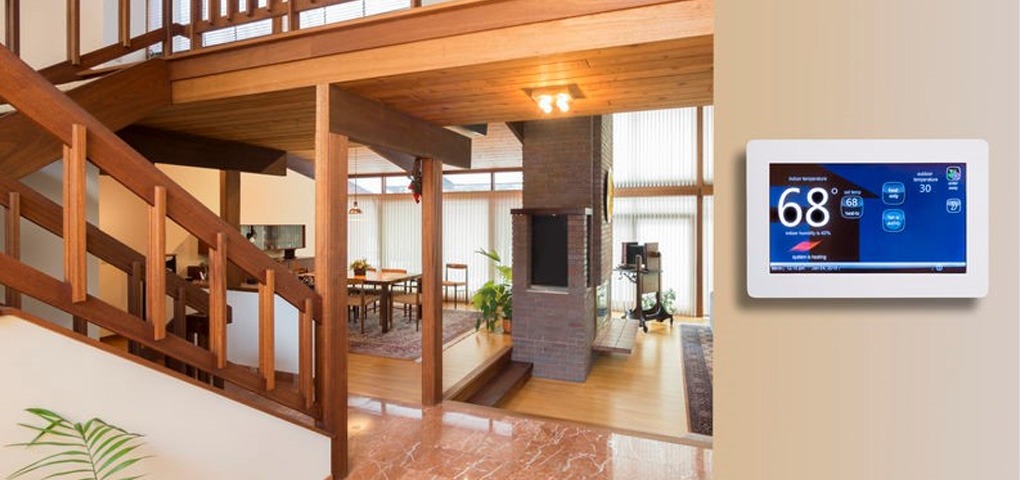With the freezing temperature outside and snowflakes on your windows, the first thing you care about is whether your home is heated enough or not. Winters are undoubtedly beautiful, but it comes with a great need to be careful about the heating systems in your space. There might be a hundred options to choose from and keep your rooms warm, but having the proper knowledge makes the process much easier. Furnaces are one of the most useful devices that generate heat in your house and keep it comfortable when it’s icy outside. These devices work in a controlled manner and produce heat by the combustion of a fuel supply. The energy produced through combustion is then utilized to heat houses, buildings, and other structures through ducts. Here are different types of furnaces that can be used to warm up your spaces and go cozy. Take a look.
Gas Furnaces
Gas furnaces are the most common types used to heat up spaces. The main components of a gas-fired furnace include a thermostat, draft hood, burners, heat exchanger, blower, and flue vent. The thermostat signals the furnace that the indoor temperature has dropped below a certain point and the house needs heating. The air is drawn into the burner and mixes with gas for combustion. Besides, gas is considered the cleanest fuel source for home heating systems. However, there are some risks of carbon monoxide leaks, which makes it important to install CO detectors. The average lifespan of gas furnaces is 25 years, and they are also much easier to maintain because they stay clean as compared to oil furnaces.
Oil Furnaces
In areas where there’s a limited supply of gas, people use oil-fired furnaces. Oil furnaces have 80 to 90% of AFUE, a slightly lower fuel utilization efficiency rate than gas furnaces. The lifespan of these devices is around 30 years, but they need a higher level of maintenance due to soot and carbon deposits on the heat exchanger surfaces. In case of more extended periods with no maintenance, the furnace’s efficiency will keep decreasing, and the device will die sooner than it is supposed to. An oil furnace works by pumping oil into the chamber from the tank through pressure injection. The system burns the oil, and the heat and gas from it go into the heat exchanger. The air in the exchanger combines with the gasses and heat coming to generate hot air, which then blows out through the vents into the home.
Waste Oil Furnaces
Waste oil furnaces are the kind of devices that use oil that cannot be utilized for their intended purpose. Vegetable oils and automotive oils are examples of these. This option is often considered and promoted as environment friendly because it involves recycling the oil which would have been discarded otherwise. However, unfortunately, waste oil can hold detergents, lubricants, and other pollutants taking in lead, Chromium, PCBs, and more that can spread in the air during the heating process. The environmental protection agency gives guidance on which fuels are safe to burn for heating purposes, whereas some fuels need the users to get a permit and keep track of the emissions. Waste oil furnaces have a lifespan of 20 to 25 years.
Electric Furnaces
Electric furnaces have some great benefits as compared to oil or gas furnaces. Electricity is generally available in all areas, including those as well where there’s a limited supply of gas and oil. All electric furnaces have a fuel utilization efficiency of 95 to 100%, which makes them more expensive than all the other kinds of furnaces. However, a great variety of these furnaces are available online and in stores at huge discounts and online deals. The working phenomenon is simple where the system pulls the air in the heat exchanger, and the electric heating elements warm it up. The heated air is then blown back into your home through the ducts. Moreover, electric furnaces are also considered safer than oil and gas ones as there’s no risk of gas leaks or a fire in the furnace.
Wood Burning Furnaces
The option of wood-burning furnaces is good for areas with an extensive and affordable supply of firewood. A firebox is utilized to burn the wood, and the heat generated through it is pushed in the ducts to warm the rooms. These types of furnaces do not work on their own. Instead, one has to manually fuel them. For times when you’re not home, but you want your home to be heated, this option is useless. Therefore, wood furnaces are usually used in combo with gas or oil furnaces where you have a backup option. The general AFUE of wood-burning furnaces is 45 to 55%, but the latest models can stretch up to 75 to 90%.

